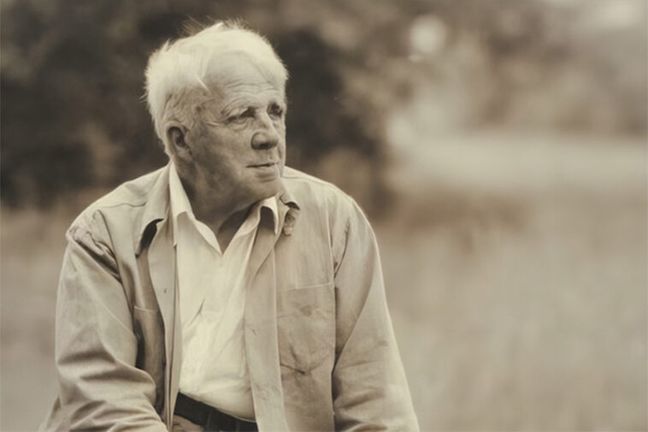The Arizona Supreme Court recently took a look at an exclusion in standard-form title insurance. The Court’s interpretation may have consequences for insurers across the state, as it might mean lenders are uninsured against a senior mechanics’ lien if the lender’s cessation of funding caused the mechanics’ lien.[i] In the case, the Court “consider[ed] the meaning and application of Exclusion 3(a) – a standard title insurance policy exclusion designed to cover any defects, encumbrances, or adverse claims ‘created’ or ‘suffered’ by the insured – in the context of construction lending.”[ii]
Facts
A developer, Osborn III Partners, LLC (“the developer”). hired Summit Builders (“Summit”) as its general contractor on a condominium project. The developer entered into a loan agreement with Mortgages Ltd. (“ML”) to finance the project’s construction. Under the terms of the agreement, ML lent the developer $41.4 million, which was to be secured by a deed of trust on the property. ML purchased title insurance to ensure the priority and validity of the deed of trust. The terms of the policy protected the priority of ML’s deed of trust against mechanics’ liens arising from work related to the land which began before the policy inception. The policy contained Exclusion 3(a).
Summit had completed its portion of the construction work authorized by the developer before ML notified the developer that it had not received an interest payment and had therefore ceased funding for the project. The developer failed to pay Summit for its completed work. As a result, Summit filed its notice and claim of mechanics’ liens to attempt to recover compensation for the work it had completed.
Summit sued to enforce its mechanics’ liens, which had priority over ML’s deed of trust. After three years of litigation, ML settled with Summit to resolve the lien foreclosure action. However, ML had filed for bankruptcy, so its interest in the note had been transferred to a group of successors (“Osborn”). After the settlement with Summit, Osborn sought to recover the amount of the settlement from the insurer, Fidelity. Fidelity denied the claim.
After a bench trial, the court found in favor of the insureds on the issue of coverage and granted summary judgment to Fidelity on the bad faith claim. Fidelity appealed, and the insureds cross-appealed. The Court of Appeals affirmed in part, reversed in part, vacated in part, and remanded. Review was granted.
The Analysis
Exclusion 3(a) is referred to as “the most litigated provision in the standard-form title-insurance policy purchased by real-estate lenders to protect their security interests in ongoing construction projects.”[iii] After almost a decade of litigation, the Arizona Supreme Court was faced with the question of whether ML caused the mechanics’ lien. The Supreme Court found the language of the policy unambiguous and ruled ML’s claim should be denied if it was found to have caused or created Summit’s lien. However, the Supreme Court found the record was not sufficiently developed as to this question and needed to be further evaluated by the trial court.
The questions to be addressed by the trial court are:
- “whether the Developer failed to pay Summit because ML withheld remaining funding, or whether the Developer’s failure to pay Summit preceded ML’s withholding of funds,” and
- “whether the work Summit performed that resulted in mechanics’ liens occurred before or after ML withheld funds, at least in part, and whether ML notified Summit that funding would cease.”[iv]
The Court reasoned: “Exclusion 3(a) will only apply if ML’s actions caused Summit’s mechanics’ liens.”[v]
This exclusion, which is standard in most title insurance policies, is colloquially “described as excluding matters that are the insured’s ‘own darn fault.’”[vi] To determine if Summit’s mechanics’ liens are ML’s “own darn fault,” the Court stated it first had to delineate the parameters of Exclusion 3(a) to identify insureds’ conduct which triggered the exclusion. In so doing, the Court interpreted the exclusion according to the terms of its ordinary meaning.
The Supreme Court of Arizona held a causation inquiry is required to determine whose conduct actually caused the defect, encumbrance, or adverse claim. If ML’s actions caused the mechanics’ liens, the exclusion would apply.
Takeaway
This decision could bar coverage under a title policy with Exclusion 3(a) if a mechanics’ lien was “caused” by a lender who ceased funding. As such, construction lenders should be aware of the risks associated with ceasing funding of a project and must consider the impact it could have on the priority of their lien under a title insurance policy. If a developer’s failure to pay a contractor was caused by the cessation of funding, then coverage would be barred. As such, before cessation of funding, a construction lender should consider the consequences of the action, especially if there is a contractor who already completed some work.
Keep Reading
More by this author
Sources
[i] Fidelity National Title Insurance Company v. Osborn III Partners LLC, 524 P.3d 820 (2023).
[ii] Id.
[iii] Id. at 823. (citations omitted).
[iv] Id. at 826.
[v] Id. at 826.
[vi] Id. at 823, citing 1 Joyce Palomar, Title Insurance Law § 6:10 (2022 ed.).


 Author: Maria Regina Kupillas
Author: Maria Regina Kupillas
 Editor: Ashley Paige Fetyko
Editor: Ashley Paige Fetyko
 New Florida Discovery Rules Are Hot off the Press! What You Need to Know (and Do) Now
New Florida Discovery Rules Are Hot off the Press! What You Need to Know (and Do) Now
 Audish v. Macias Builds Upon the Foundation Started in Howell v. Hamilton Meats & Provision, Inc. By Affirming the Admissibility of Medicare...
Audish v. Macias Builds Upon the Foundation Started in Howell v. Hamilton Meats & Provision, Inc. By Affirming the Admissibility of Medicare...
 My New Year’s Resolutions at Work
My New Year’s Resolutions at Work
 Barking Up the Wrong Policy
Barking Up the Wrong Policy
 California Civil Procedure Code Section 998 – a Means to An End
California Civil Procedure Code Section 998 – a Means to An End
 May or Must: California and the Ninth Circuit Applies Grammar Rules for FMLA
May or Must: California and the Ninth Circuit Applies Grammar Rules for FMLA
 Par For the Course
Par For the Course
 Shining Light on Phantom Medical Bills–Lessons from Washington on Using Federal Hospital Price Transparency Rules to...
Shining Light on Phantom Medical Bills–Lessons from Washington on Using Federal Hospital Price Transparency Rules to...
 When Roads Diverge in the Wood: the Power of Risk in Building a Fulfilling Career and Stopping Nuclear Verdicts®
When Roads Diverge in the Wood: the Power of Risk in Building a Fulfilling Career and Stopping Nuclear Verdicts®
 My Path to Partner: Maria Kupillas
My Path to Partner: Maria Kupillas
 The Ninth Circuit Reminds Us: Every Word Matters
The Ninth Circuit Reminds Us: Every Word Matters
 An Employer Can Benefit from Being the Most Reasonable Person in the Courtroom
An Employer Can Benefit from Being the Most Reasonable Person in the Courtroom
 The Party Who Controls the Narrative Controls the Outcome in Trial
The Party Who Controls the Narrative Controls the Outcome in Trial
 $1.75 M Settlement Ends EEOC Claim
$1.75 M Settlement Ends EEOC Claim
 Pandemic Nightmare: Horse Racing Track Wants Coverage for COVID Business Losses
Pandemic Nightmare: Horse Racing Track Wants Coverage for COVID Business Losses
 I (May) Survive: A Respondeat Superior Claim May Survive Despite Dismissal of a Claim Against an Employee
I (May) Survive: A Respondeat Superior Claim May Survive Despite Dismissal of a Claim Against an Employee
 Arizona Court of Appeals Insulates County from Liability for Deputy Sheriff’s Negligence
Arizona Court of Appeals Insulates County from Liability for Deputy Sheriff’s Negligence